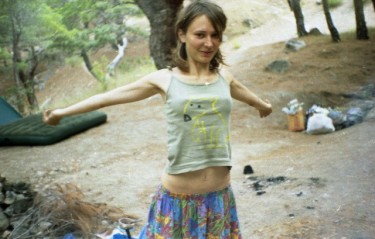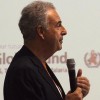Svetlana Sharamok is an information manager for the Association of Substitution Treatment Advocates of Ukraine (ASTAU), of which the Rising Voices grantee project the Drop-In Center is a member. The ASTAU has also been a driving force behind many of the citizen media initiatives that we have been featuring over the past year. Svetlana recently started her position with ASTAU in late 2011. With her background in journalism, she is responsible for updating their website, Facebook account, and for promoting the work of ASTAU among the Ukrainian public. In this email interview with Rising Voices, she talks about herself, her job in the association, and her future plans for using citizen media to raise awareness about her organization and the people they serve.
Rising Voices: Could you please tell us a little bit about yourself?
Svetlana Sharamok: I am young, beautiful, and happy. And I worked as a journalist before. I like to create and implement various social projects, to do something that makes people to look at the ordinary things from a new perspective, such as garbage or asphalt or to place gloves and hats on the trees to keep them warm in the winter. I also adore traveling.
RV: How did you join the Association and what do you do as the information manager?
SS: Working as a journalist, I never thought that I would join the Association, I did not even know about its existence. When I came to meet with Olga [Olga Beliayeva, the head of the Association] and when I saw my portrait published in the ‘Konoplianaya Pravda’ [newsletter, published by the Association], I realized that perhaps somehow I would work there. But it has happened much faster than I could even imagine. I started to work in the Association just for a few months, but I was able to realize that there is no such word as ‘impossible,’ we can do everything, if we do not know something – we can learn. Perhaps this philosophy is what I like the most in my work.
I must stay in touch with the members of the Association, update the Facebook page of the Association, update the news page on the web-site – these are my main job responsibilities. I have a lot of work to do, but it is diverse and interesting. Now I often go to the substitution therapy sites, meet the doctors, nurses, patients, and I have a feeling that soon I will meet the police as well. Now, before the elections of the Board of the Association, I met with many of the activists and the regional representatives.
RV: Could you please describe your typical working day?
SS: I am an information manager. For example, today on my agenda I must call approximately 80 members of the association meaning that about 50 people will wish something good for me, and I am waiting until all these wishes will come true. Some people will share with me the news that their child went to school, somebody will tell me that they have found a job, some members are preparing to be on the TV talk show about drugs. Often I call a person for the first time, but I have a feeling that I am talking to my old friend.
In the morning, I often visit ORT sites and meet with doctors and the patients. The patients are in a hurry, they need to take the medication and then to run to their jobs. Some people are coming to the sites with their relatives, not because they force them to have the treatment, but just to protect them from the police, but this does not always help.
RV: What are your future plans as an information manager of ASTAU?
SS: I would like to produce a short documentary about people who take part in the substitution therapy. I do not understand why there is so much discussion about the opiate replacement therapy (ORT), I often meet these people and they more look like users of insulin than users of drugs, but of course you can find various personalities… My other plan is to increase the internet activism of the bloggers – ORT patients both on the Facebook and our web-site as I believe that their experience is interesting and useful.
RV: How you would describe the members of the association?
SS: Once I was asked how I would describe a former drug addict. I thought much before answering this question. Really, who are the patients of the substitution therapy? They do not look like a community of bikers, or bicyclists or a community of marijuana lovers. These are people with various life stories and from various professional backgrounds. Igor makes documentaries about the lives of women, the family of Sergey and Lena works at a charity fund and helps other people to reduce the harm from drug usage. Eugene is a pharmacist; Olga is a director of the charity fund. Life is life and it does not give any credit to people who used to take drugs.
RV: What do you think the Association does for its members? How does it helps them?
SS: For some people, the Association is their life. Sometimes you call such people and hear about how they fight for the continuity of treatment [availability of Methadone in other medical establishments], and then in a few days you see the news that in this particular town the first patients received the medicine in the hospital. Some people have joined the Association just to know where to go and who they should address when they need assistance. We are a sort of buffer between medical personnel, health care officials, and people who receive the substitution therapy or just want to start receiving it.





